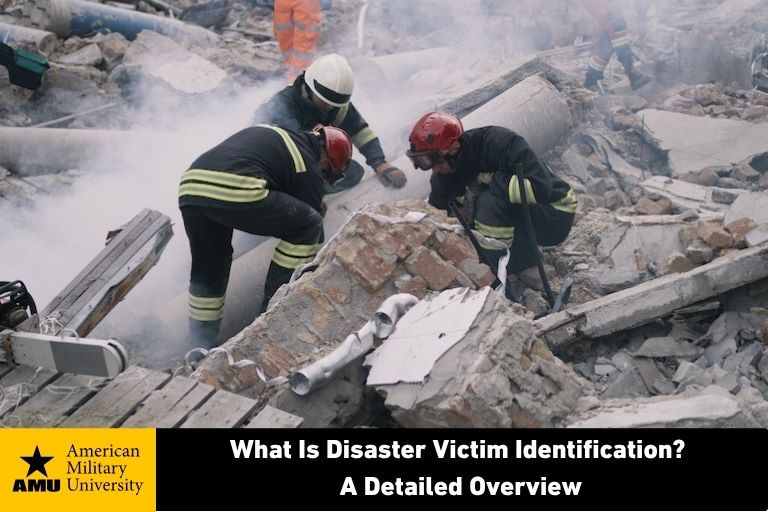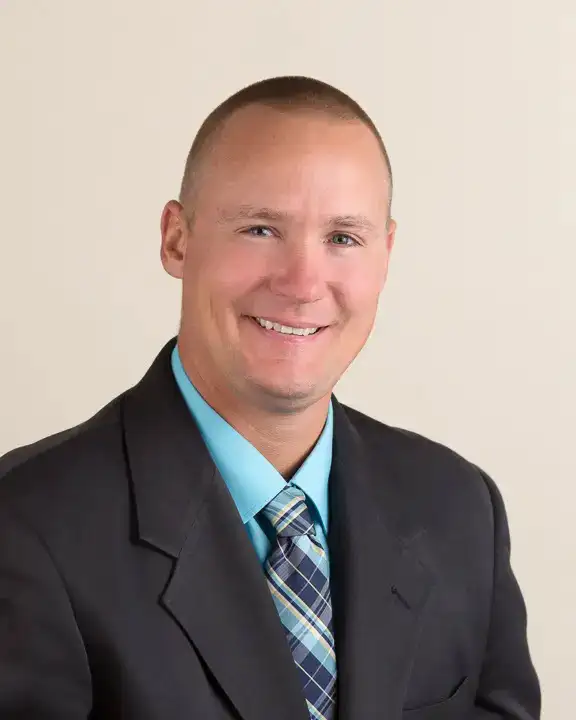By Dr. Jarrod Sadulski | 10/27/2025

Manmade and natural disasters are part of life and can occur any time. Just in the past few years, there have been terrible disasters in the United States in at least 12 states.
For example, the Hawaii wildfires killed at least 100 people in August 2023. Similarly, the Central Texas floods in July 2025 cost the lives of more than 135 people. A tornado outbreak in March 2025 resulted in the deaths over 40 people in the Midwest.
The international community has also experienced major disasters in recent decades. For example, the Boxing Day tsunami, also known as the 2004 Indian Ocean tsunami, was hugely devastating. It killed approximately 228,000 people across 15 countries.
Similarly, the May 2024 floods in East Africa resulted in hundreds of deaths. In April 2025, Malaysia’s Kuala Lumpur experienced an explosion from a broken gas pipeline that injured 145 people.
But not all disasters are natural, as in the case of the October 2002 Bali bombings. These bombings resulted in the death of 202 people.
The Challenges of Disaster Response
Disaster response presents unique challenges. When disasters resulting in mass casualty events occur, first responders such as police officers and emergency medical technicians immediately respond to the scene to save lives.
In disasters with widespread damage, disaster victim identification (DVI) is a particularly difficult challenge. Initially, emergency services often have limited resources immediately following a disaster.
To bring additional resources to the scene of the disaster, a state of emergency or a disaster may be declared by a government official. The Red Cross may also become involved in the disaster response to aid police officers.
In situations where mass casualties have occurred, accurate and timely victim identification is important. Family members depend on first responders to quickly locate and identify their loved ones.
Disaster Victim Identification After Major Disasters
In major disasters, human remains are typically recovered and need to be identified. The DVI process depends on several factors.
For instance, personal effects such as a driver’s license or a vehicle registration can help first responders to identify someone. Personal items such as cell phones, clothing, or jewelry engraved with a name may also be used to identify victims.
In other cases, deceased persons are identified through:
- Dental records
- Fingerprints
- DNA analysis
- Postmortem forensic anthropology
Disaster victim identification may extend beyond the capabilities of local authorities. Primary identification of disaster victims may depend on forensic anthropologists, forensic practitioners, and other practitioners of the forensic sciences.
Disaster Victim Identification through DNA
When samples of DNA are obtained from a disaster victim, forensic identification depends on a sample match. In some cases, forensic specialists can use DNA collected from items a family member provides – such as a hairbrush – to confirm a match.
In other cases involving DVI efforts, DNA evidence from victims may not be readily available. When this situation occurs, one option investigators have is investigative genetic genealogy (IGG). Investigative genetic genealogy enables DVI teams to identify mass disaster victims and other deceased persons by comparing the victim’s DNA to public genetic genealogy databases.
These public genetic databases are commonly used to learn about one’s heritage or family tree. They include:
- GEDmatch
- 23andMe
- FamilyTreeDNA
- Ancestry.com
Investigative genetic genealogy can also use the samples of DNA from a victim's relatives for body identification. If both a victim and a victim’s relative have both provided a DNA sample to a public genetic genealogy database, investigators can do additional research to accurately identify a disaster victim.
Some of these databases require a court order for law enforcement to access DNA samples. However, they can serve as a powerful tool in disaster victim identification responses.
DVI responses should utilize all available resources to collect further information, such as facial recognition and antemortem data. Antemortem data involves the medical, dental, and other personal records collected before someone dies. Any information collected before a disaster strikes can be helpful in the DVI process, especially for people who reside in high-risk areas prone to disasters like tornadoes and tsunamis.
Primary identifiers – such as tattoos and medical implants – should be considered in disaster victim identification. Receiving a personal description of what a victim looked like from loved ones can also help in victim identification.
Medical findings through DVI protocols can definitely help to identify people. However, it is important for a disaster scene to be secured so that human remains do not become contaminated or disturbed.
A best practice is to treat intact bodies and even small fragments of bones with the same process used for crime scenes. The police are well versed in securing crime scenes, and the same process should be used for DVI procedures and mass graves.
INTERPOL’s Role in Disaster Victim Identification
The INTERPOL DVI Guide provides four phases to identification in DVI efforts. These phases are:
- Phase 1: Scene examination
- Phase 2: Post-mortem or PM data
- Phase 3: DNA testing
- Phase 4: Reconciliation
In Phase 1, DVI practices include responding to the scene for identification of victims and their property.
Phase 2 is where human remains are examined to determine as much biometric data as possible. Additional information is collected, such as:
- Fingerprints
- Facial recognition
- Odontology (dental examination)
- DNA
- Any other evidence that can lead to a positive identification
Phase 3 involves DNA testing and collecting information about unaccounted-for people. Investigators gather information through next-of-kin interviews, and they also collect biometric data, such as DNA and medical data.
Phase 4 is where data is analyzed for victim identification. This phase of DVI should be used for creating case studies to strengthen future disaster response.
In addition to INTERPOL, the Netherlands Forensic Institute plays an important role in DVI in the international setting. The Netherlands Forensic Institute brings together DVI teams with forensic skills.
These DVI teams often include experts in:
- DNA profiling
- Forensic anthropology
- Forensic odontostomatology (a branch of oral medicine)
Netherlands Forensic Institute personnel are experts in the identification process in cases of mass burning victims or decomposed bodies. They are also useful in situations where the identification process is hindered by a mass number of bodies mixed together at a disaster scene.
The Challenge of Mass Fires in DVI
DVI operations and the identification process involving circumstances such as major fires can be especially challenging. The high temperatures of fires can cause:
- Severe disfigurement
- Fingerprint removal
- Bone degradation
In such circumstances, the process of primary or secondary identification through forensic processes becomes even more difficult.
Another forensic challenge associated with DVI involving fires is disaster scene contamination. Forensic DNA from the remains of multiple bodies can be intermingled in large fires, which can make accurate DVI nearly impossible. Charred victim remains in large-scale fires may require investigation by an anthropology experts and an international committee for victim identification.
In situations involving the identification of fire victims, primary identifiers such as dental evidence may be more dependable than other primary identifiers or secondary identifiers. Teeth, dental crowns, and dental fillings are often heat-resistant. DVI teams and DVI operations should work hard to preserve any dental evidence at fire scenes.
After a fire, there is sometimes only a small amount of evidence to be collected. Consequently, police and other first responders must properly secure a disaster scene and conduct a systematic review of what evidence is left at the scene. As a result, it may be easier to locate secondary identifiers.
The Emergency and Disaster Management Degree at AMU
For students seeking to improve their skills in emergency and disaster management, American Military University offers an online Bachelor of Arts in Emergency and Disaster Management. For this degree program, adult learners can take courses involving topics such as emergency planning, emergency and disaster incident command, and natural disaster management. Other courses include consequence management and the psychology of disaster.
This degree program has also earned specialty accreditation from the International Fire Service Accreditation Congress (IFSAC®). IFSAC accreditation ensures that this bachelor’s program has been rigorously examined for high standards by higher education professionals.
For further information on this degree or other related degrees, visit AMU’s emergency and disaster management program page.
IFSAC is a registered trademark of The Board of Regents for the Oklahoma Agricultural and Mechanical Colleges.

Dr. Jarrod Sadulski is an associate professor in the School of Security and Global Studies and has over 20 years in the field of criminal justice. He holds a bachelor’s degree in criminal justice from Thomas Edison State College, a master’s degree in criminal justice from American Military University, and a Ph.D. in criminal justice from Northcentral University.
His expertise includes training on countering human trafficking, maritime security, mitigating organized crime, and narcotics trafficking trends in Latin America. Jarrod has also testified to both the U.S. Congress and U.S. Senate on human trafficking and child exploitation. He has been recognized by the U.S. Senate as an expert in human trafficking.
Jarrod frequently conducts in-country research and consultant work in Central and South America on human trafficking and current trends in narcotics trafficking. Also, he has a background in business development.
